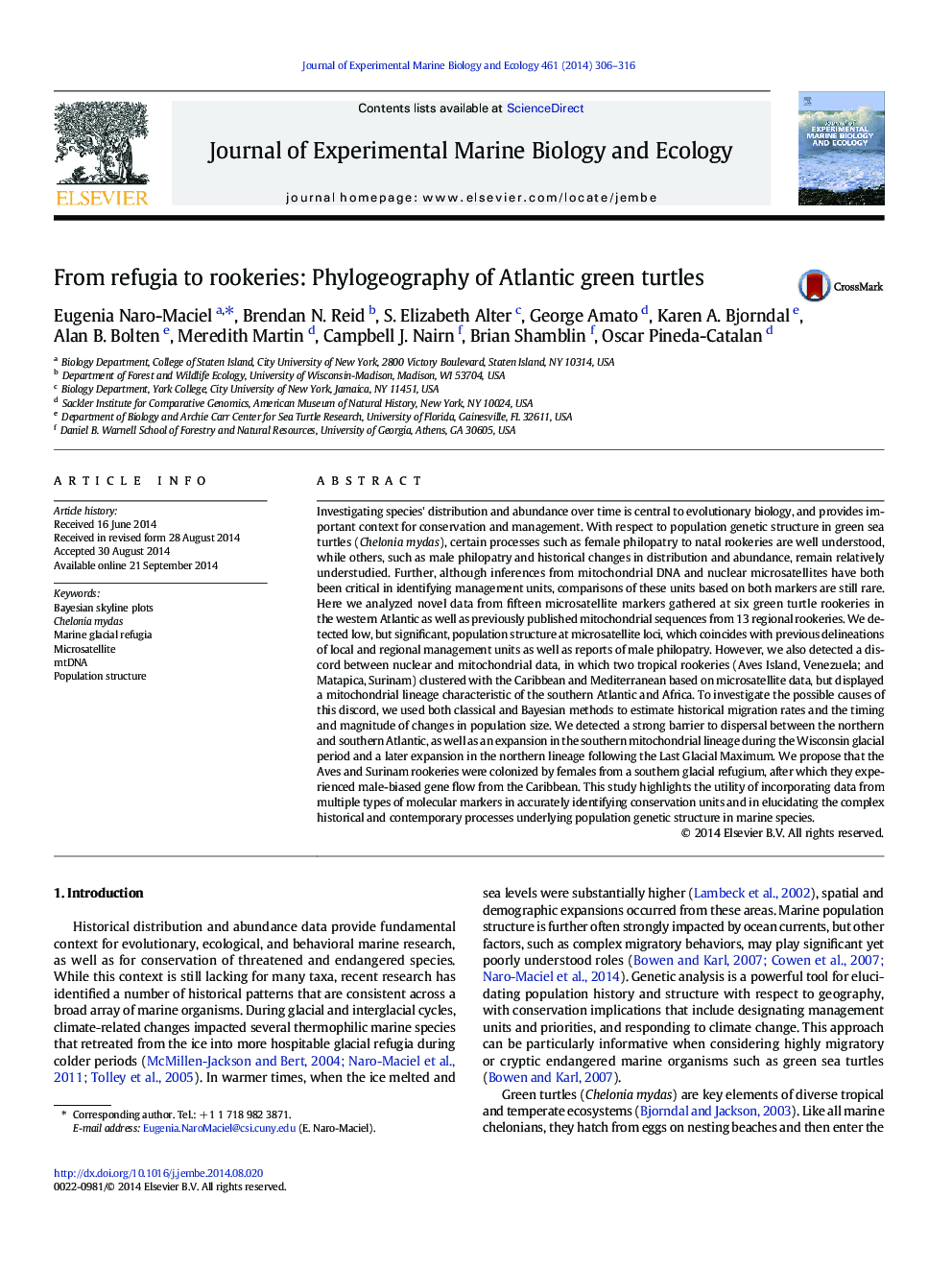| کد مقاله | کد نشریه | سال انتشار | مقاله انگلیسی | نسخه تمام متن |
|---|---|---|---|---|
| 6303967 | 1618414 | 2014 | 11 صفحه PDF | دانلود رایگان |

- We detected low, but significant, rookery structure at microsatellite loci.
- This structure supports local and regional management units, and male philopatry.
- Nuclear and mitochondrial clusters differed for two of the six surveyed rookeries.
- There was a strong dispersal barrier between the northern and southern Atlantic.
- Historic population expansions occurred from northern and southern glacial refugia.
Investigating species' distribution and abundance over time is central to evolutionary biology, and provides important context for conservation and management. With respect to population genetic structure in green sea turtles (Chelonia mydas), certain processes such as female philopatry to natal rookeries are well understood, while others, such as male philopatry and historical changes in distribution and abundance, remain relatively understudied. Further, although inferences from mitochondrial DNA and nuclear microsatellites have both been critical in identifying management units, comparisons of these units based on both markers are still rare. Here we analyzed novel data from fifteen microsatellite markers gathered at six green turtle rookeries in the western Atlantic as well as previously published mitochondrial sequences from 13 regional rookeries. We detected low, but significant, population structure at microsatellite loci, which coincides with previous delineations of local and regional management units as well as reports of male philopatry. However, we also detected a discord between nuclear and mitochondrial data, in which two tropical rookeries (Aves Island, Venezuela; and Matapica, Surinam) clustered with the Caribbean and Mediterranean based on microsatellite data, but displayed a mitochondrial lineage characteristic of the southern Atlantic and Africa. To investigate the possible causes of this discord, we used both classical and Bayesian methods to estimate historical migration rates and the timing and magnitude of changes in population size. We detected a strong barrier to dispersal between the northern and southern Atlantic, as well as an expansion in the southern mitochondrial lineage during the Wisconsin glacial period and a later expansion in the northern lineage following the Last Glacial Maximum. We propose that the Aves and Surinam rookeries were colonized by females from a southern glacial refugium, after which they experienced male-biased gene flow from the Caribbean. This study highlights the utility of incorporating data from multiple types of molecular markers in accurately identifying conservation units and in elucidating the complex historical and contemporary processes underlying population genetic structure in marine species.
Journal: Journal of Experimental Marine Biology and Ecology - Volume 461, December 2014, Pages 306-316